The One Thing About The Athens Protests No One Is Talking About
Out of all the words one might use to describe the images of civil strife and human suffering coming out of Greece on a daily basis, "pretty" is certainly not a top choice.
At rallies and protests, photographers have captured mostly pain as a parade of social groups -- students, unionists, teachers, lawyers, military officers, the disabled, the unemployed -- have taken to the streets to demand something be done for their plight amid the country's crippling recession and debt crisis. And in violent clashes with the police, they've captured anger come to life in the bloodied faces of protesters and the broken shields of riot police officers.
But while "pretty" might not be a word to describe those images, there certainly is a sense of aesthetics -- and perhaps more than meets the eye -- being displayed by the people in the wire photos from central Athens.
Take the humble bracelet. A fashion accessory of little use -- and certainly with some potential downside in the middle of a demonstration gone awry -- those little strips of silicone, leather and metal are ubiquitous on the wrists of Greek protesters. They are as varied as the demonstrators themselves. Young Athenians seem to prefer colorful plastic bands with dangling strips while older Greeks commonly sport more sedate-hued beaded decorations. Naval officers have been spotted wearing metallic chains that match the glimmer of the insignia on their epaulets. Black bloc anarchists wear thick, ragged cloth wristbands that go well with their ensemble of gas masks and dark hooded sweatshirts.
In fact, there is hardly a single picture of protesters demanding the government consider their plight in which raised arms showing closed fists fail to sport one or two bracelets.
And it's not just the protesters, either. In what could be seen as a subtle nod to fashion, police officers in Greece appear to have a strong preference for wearing something on their sleeves, too. While most of their attire has to be extremely functional, given the fact their jobs involve being pelted with rocks, glass bottles and Molotov cocktails, the officers of the much-maligned police riot unit nearly all seem to sport bracelets of one sort or another. While thin leather strips, a spartan and fire-retardant choice, seem to be most popular among this crowd, they are not the only kind seen in public. For example, during an Oct. 4 demonstration at the Ministry of Defense, an officer was captured kicking fleeing protesters in the nether regions -- while wearing a friendship bracelet.
The deeper meaning of the bracelets' omnipresence on the wrists of Greek protesters -- as well as those of the people meant to keep them in line -- is left up to sociologists. But even fashionistas and global politicos can at least agree that the arm candy on a large portion of Greeks is preferable to the rise of another arm decoration that has also become fashionable in the city lately: the armbands bearing the insignia of neo-Nazi groups, which are getting more and more political traction as Greece's situation becomes ever more desperate.
Not that everyone is happy to follow the latest fashion fads sweeping the Athenian protests. On Tuesday, during massive demonstrations against austerity meant to coincide with a visit by German Chancellor Angela Merkel, an unidentified protester ran through central Athens' Syntagma Square, not wearing a bracelet, or indeed anything at all.
If the situation gets much worse in Greece, where over a quarter of the population doesn't have a job, thousands of families are homeless and many say they don't have enough to eat, history might look back on that man, who showed the world how even the clothes on his back had been taken from him, as a trend-setter.

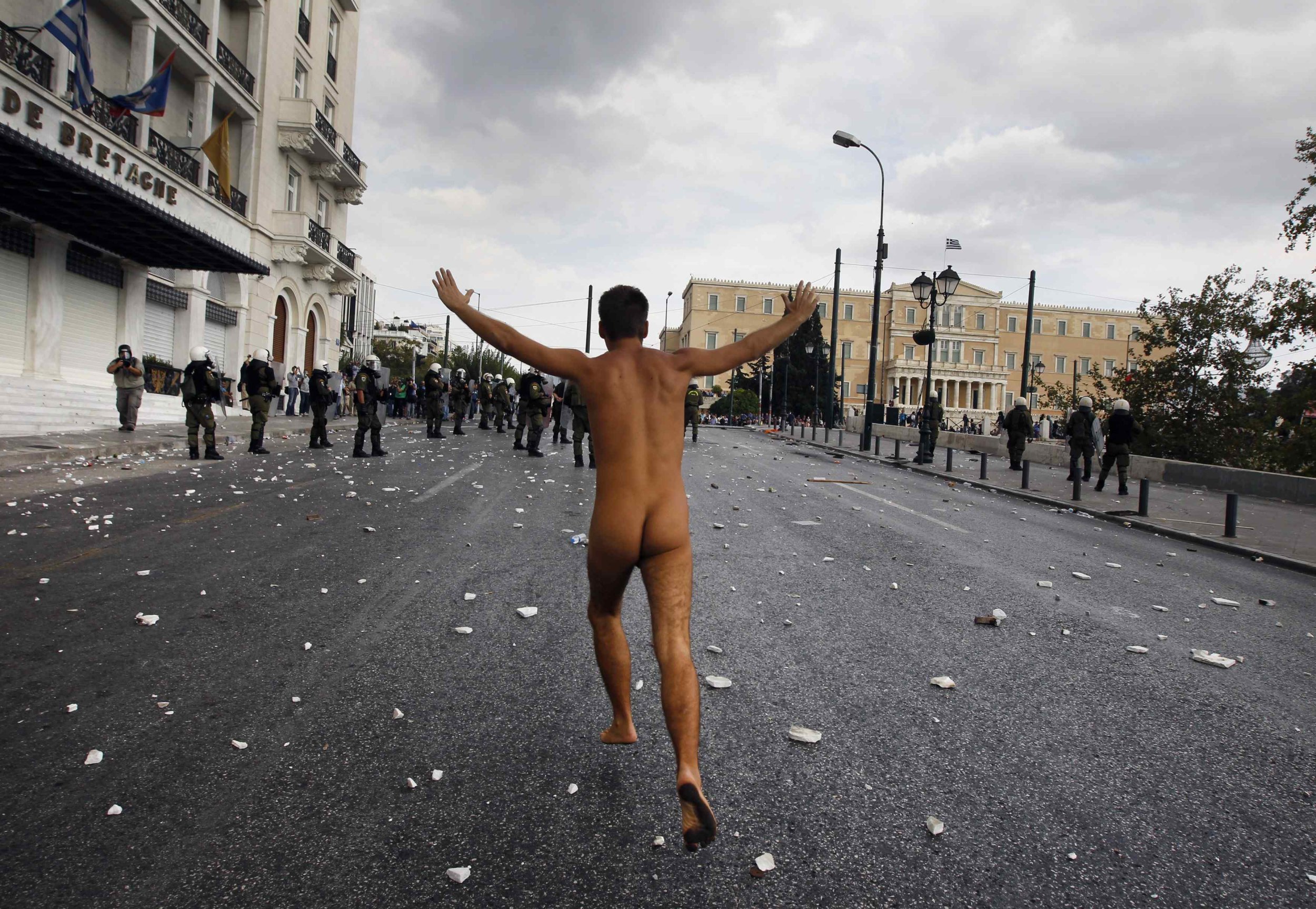
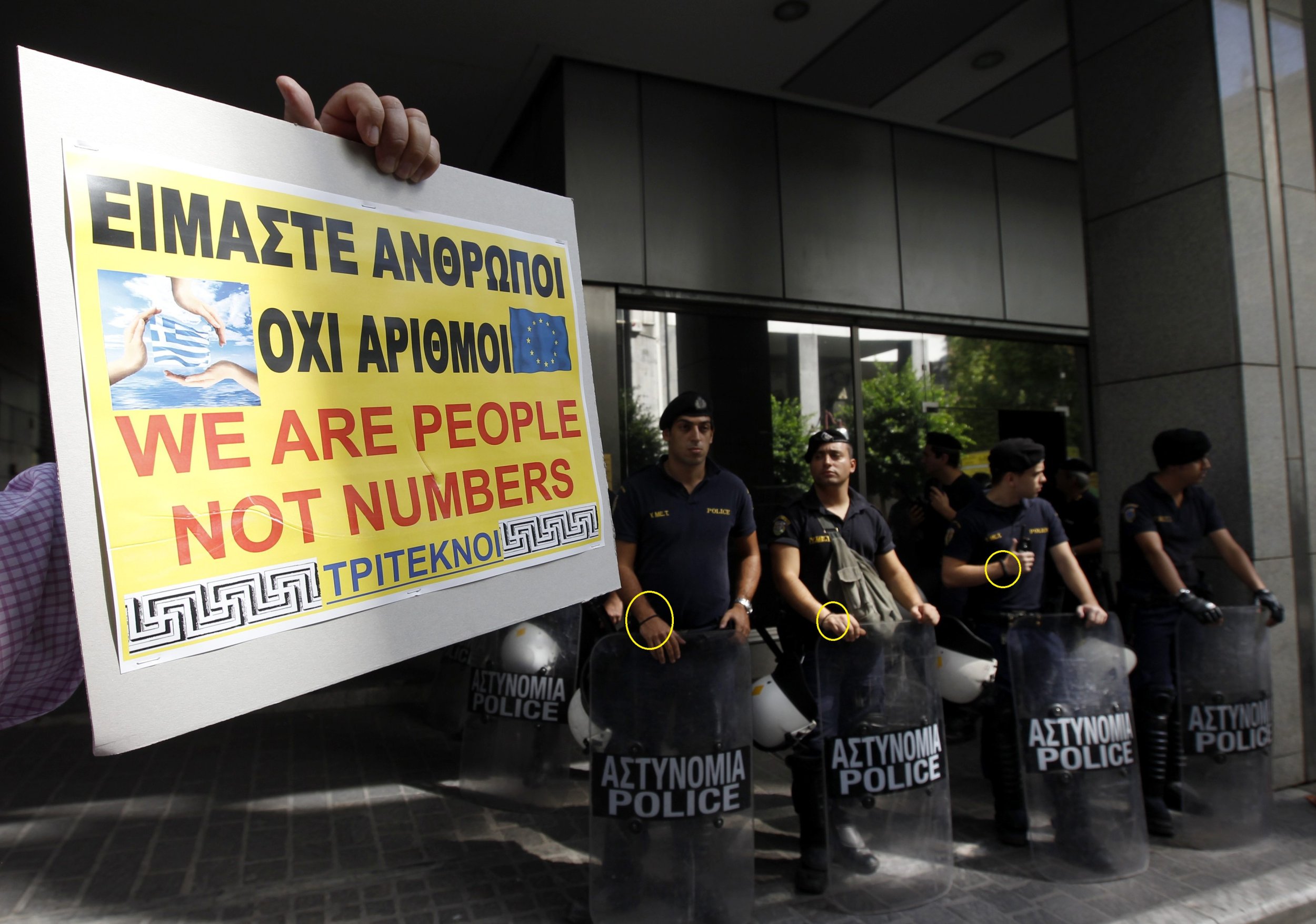
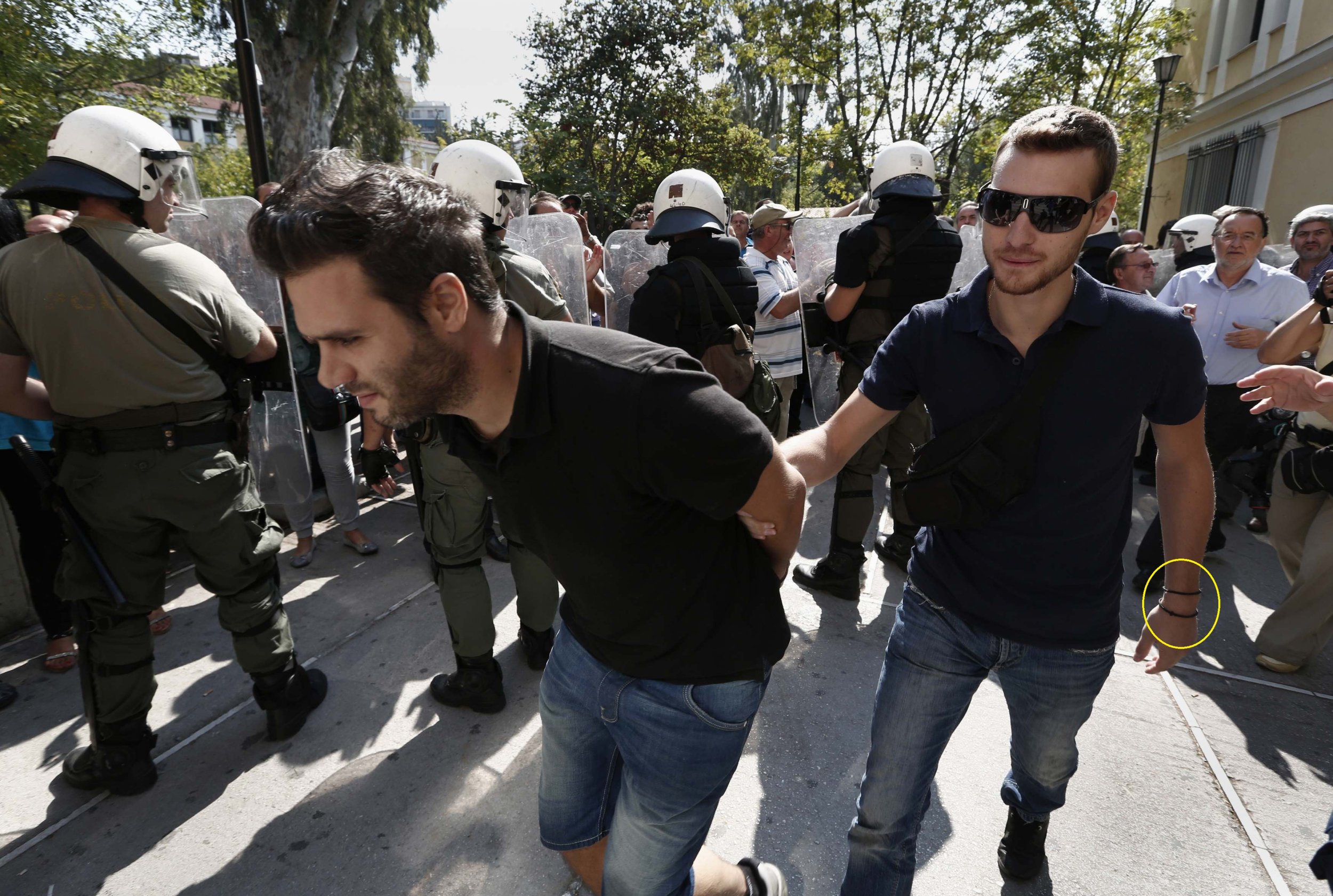




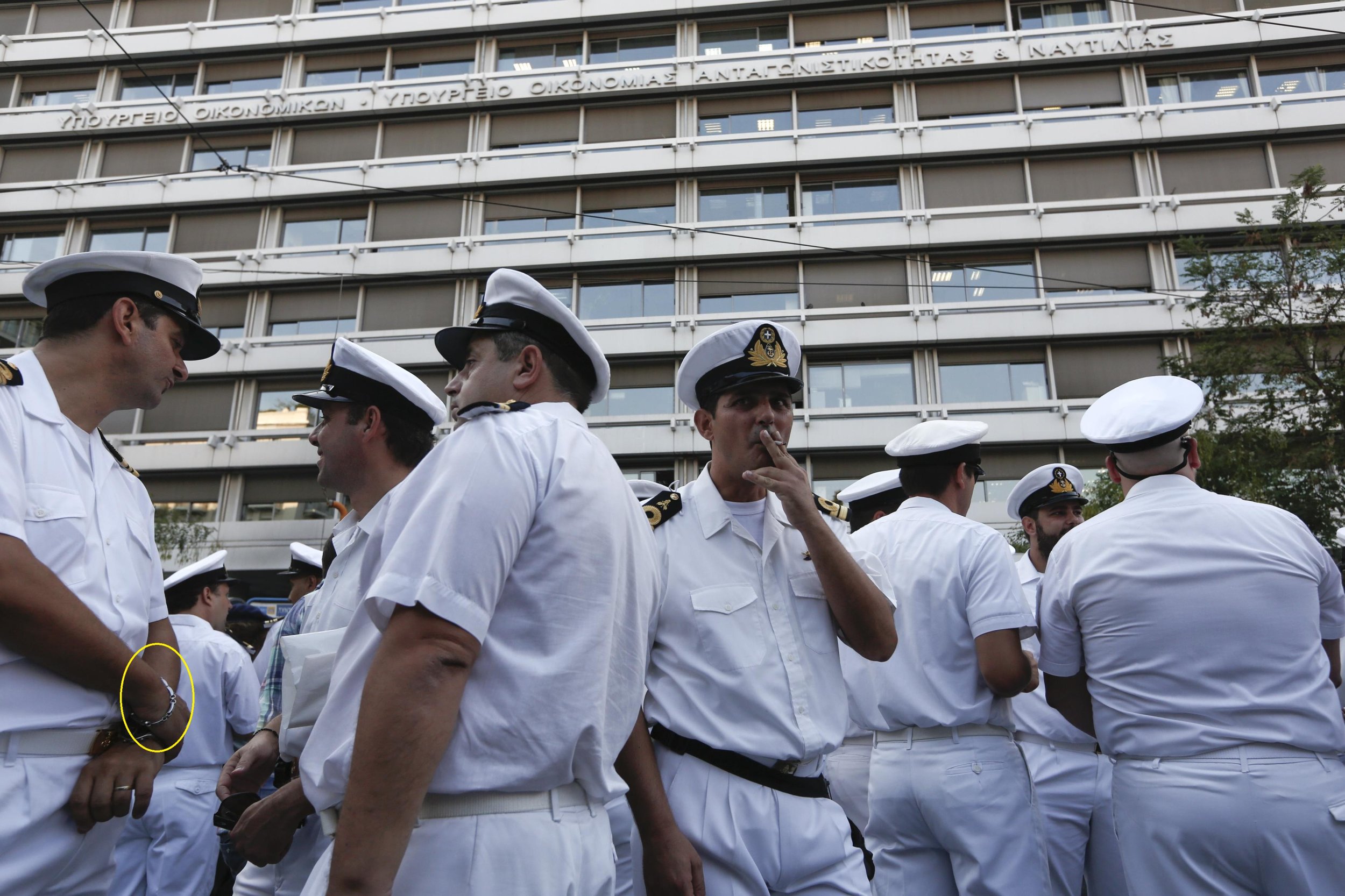


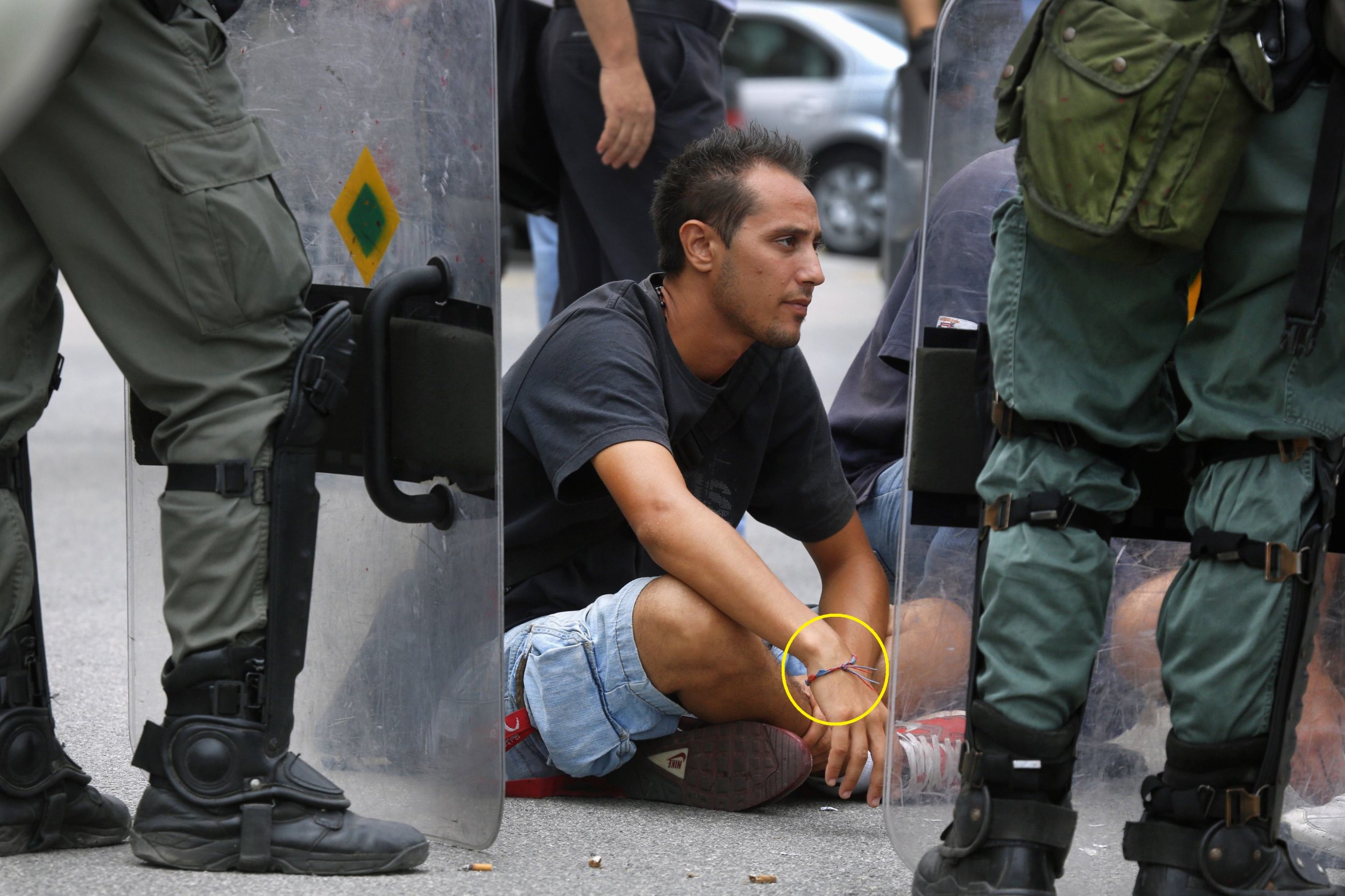
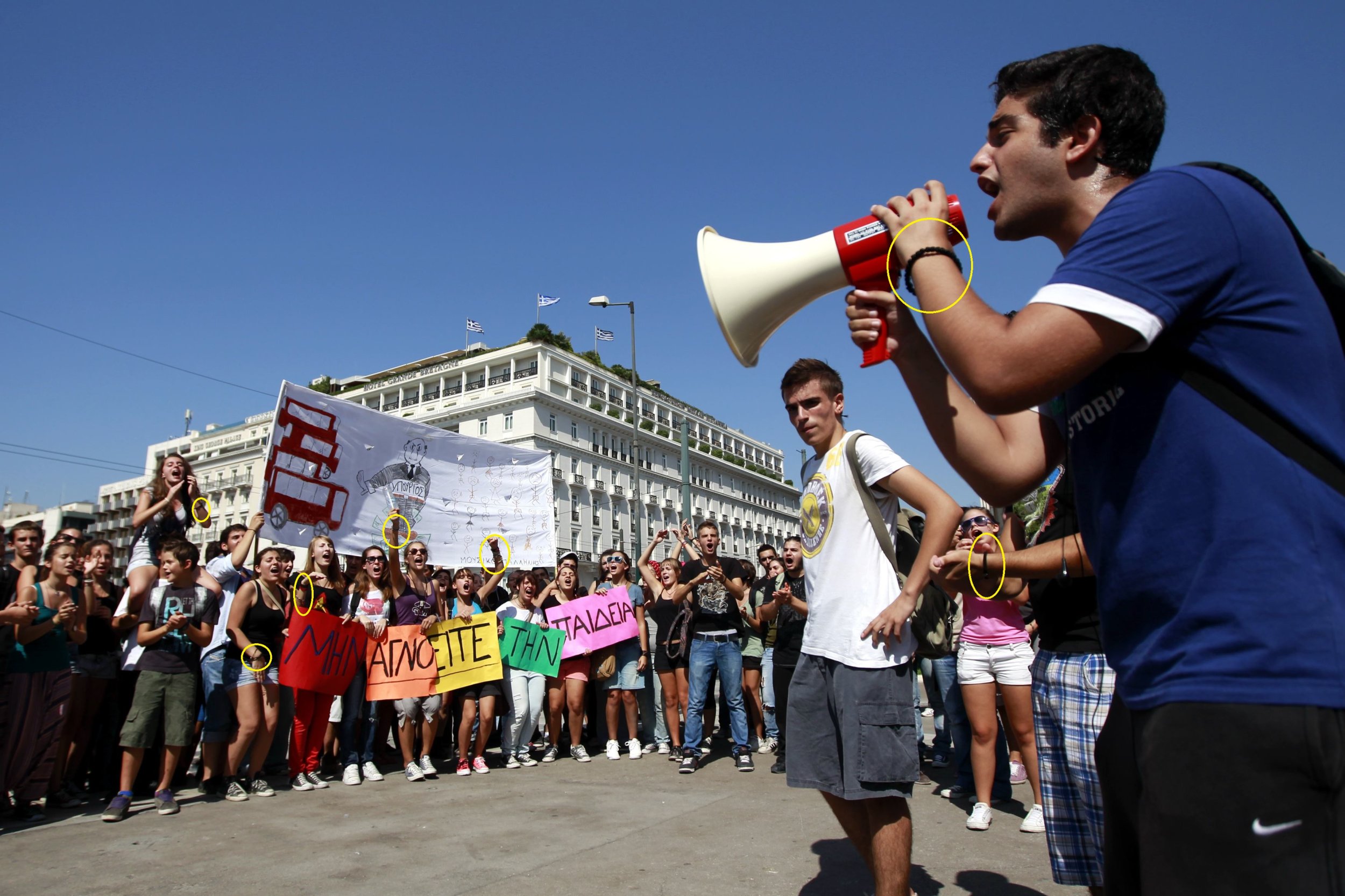
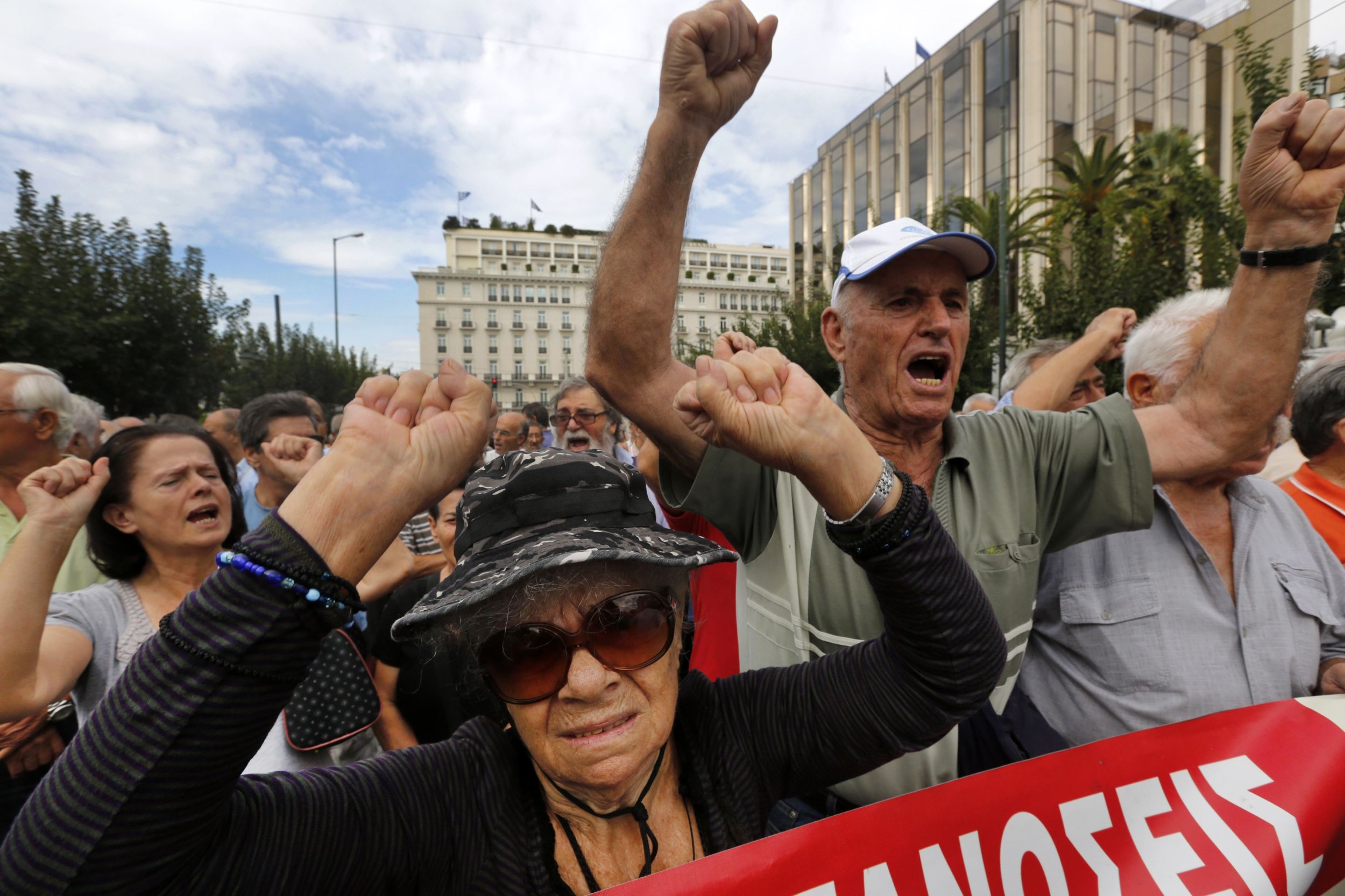

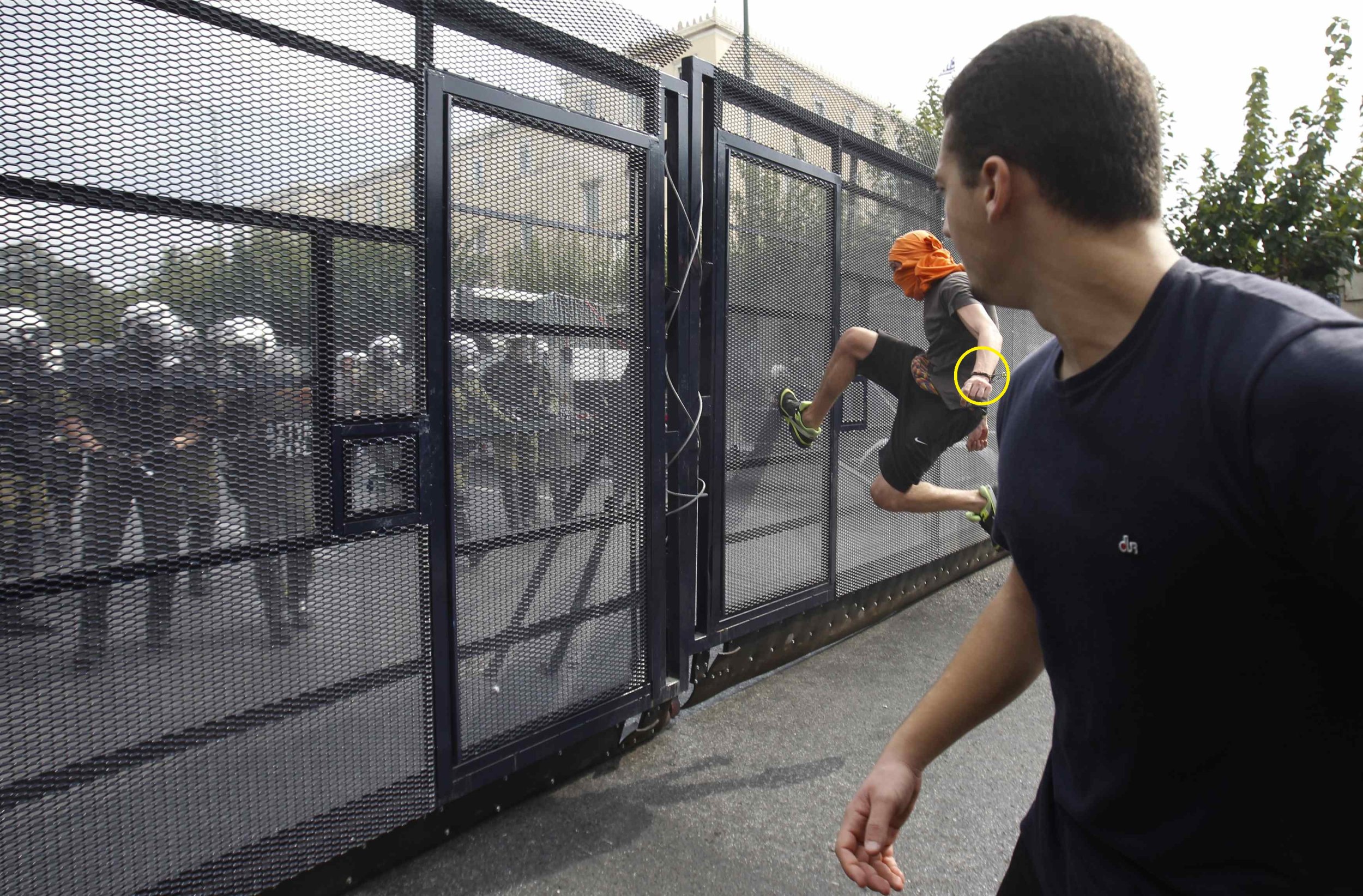
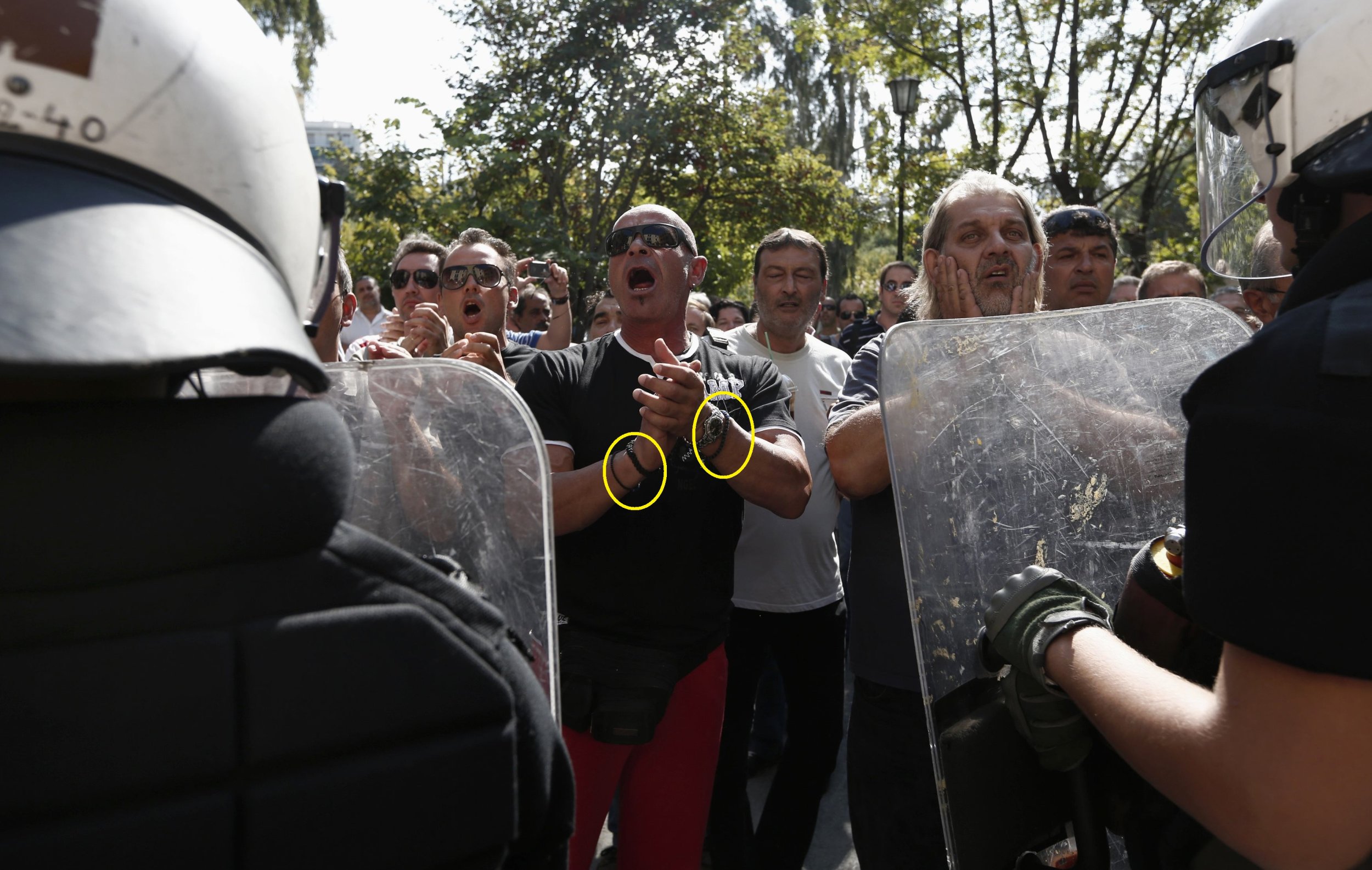
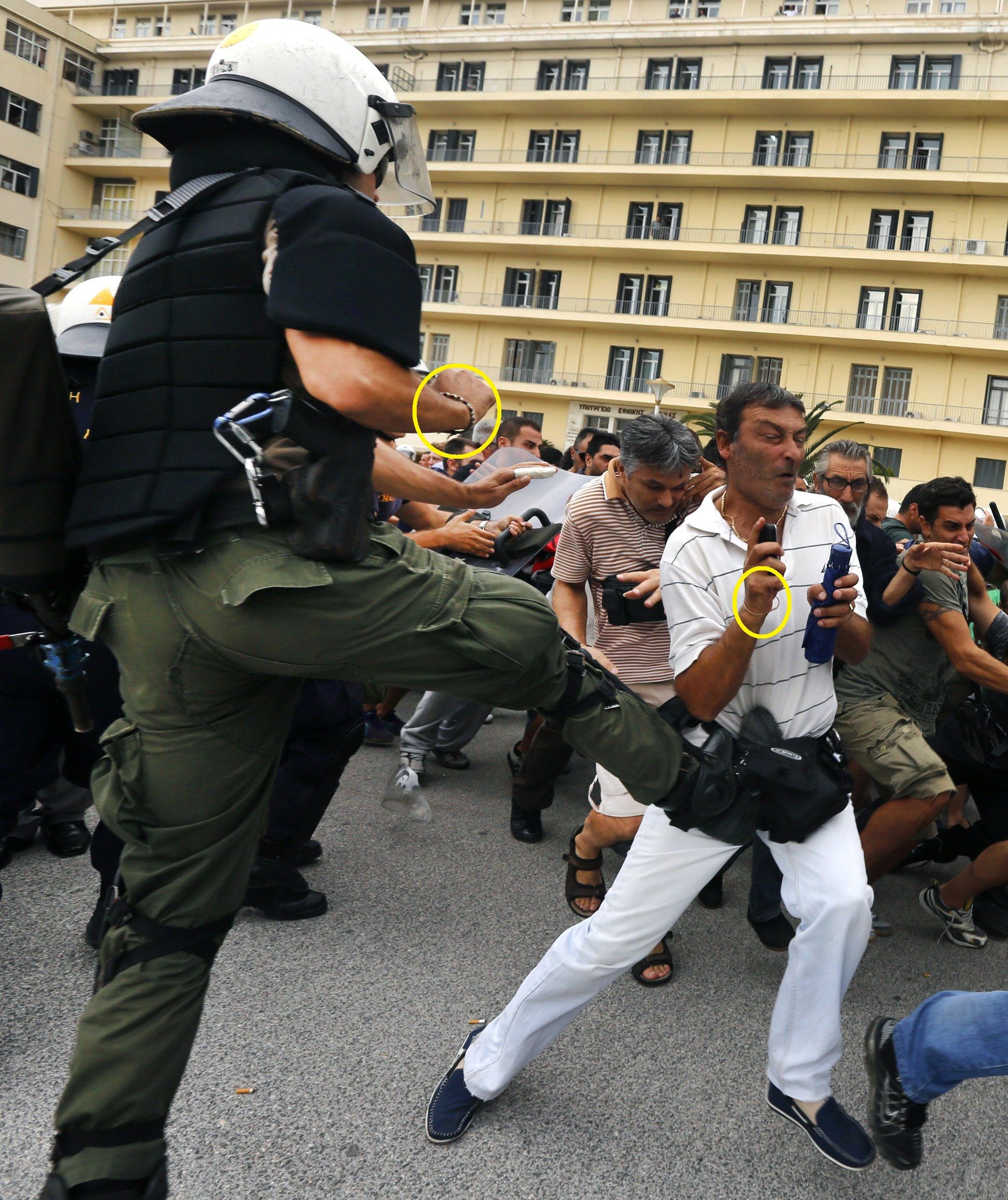
© Copyright IBTimes 2024. All rights reserved.





















